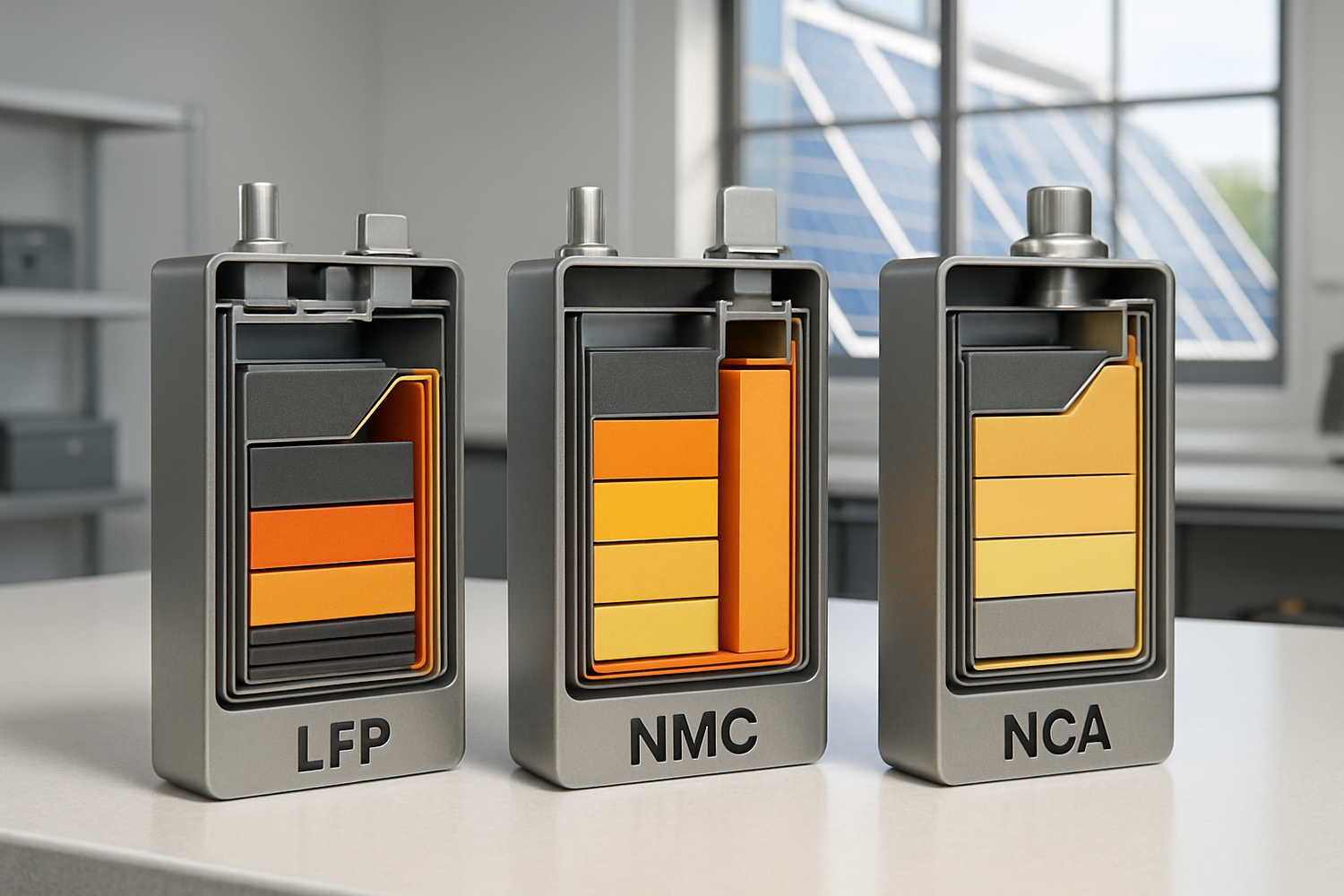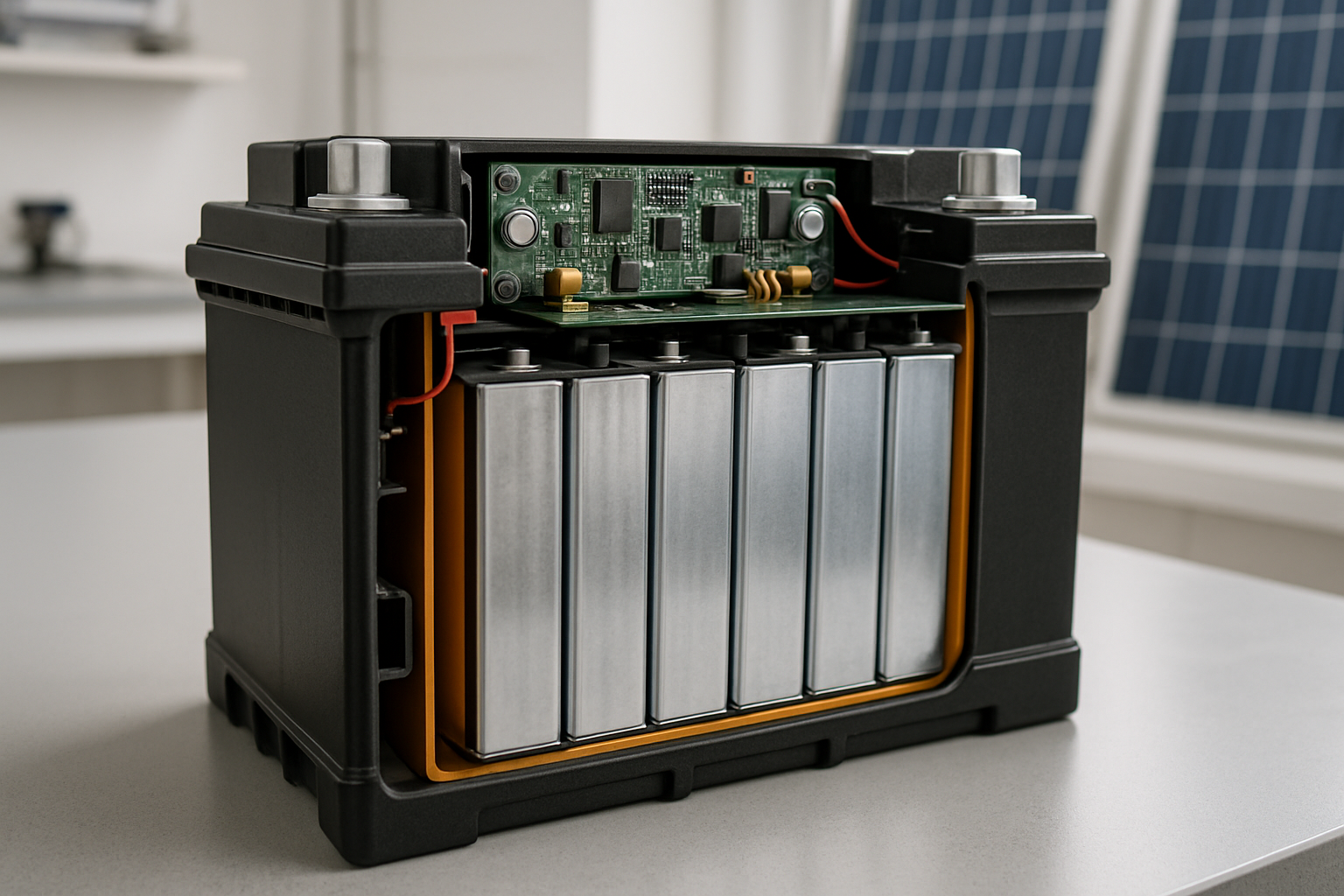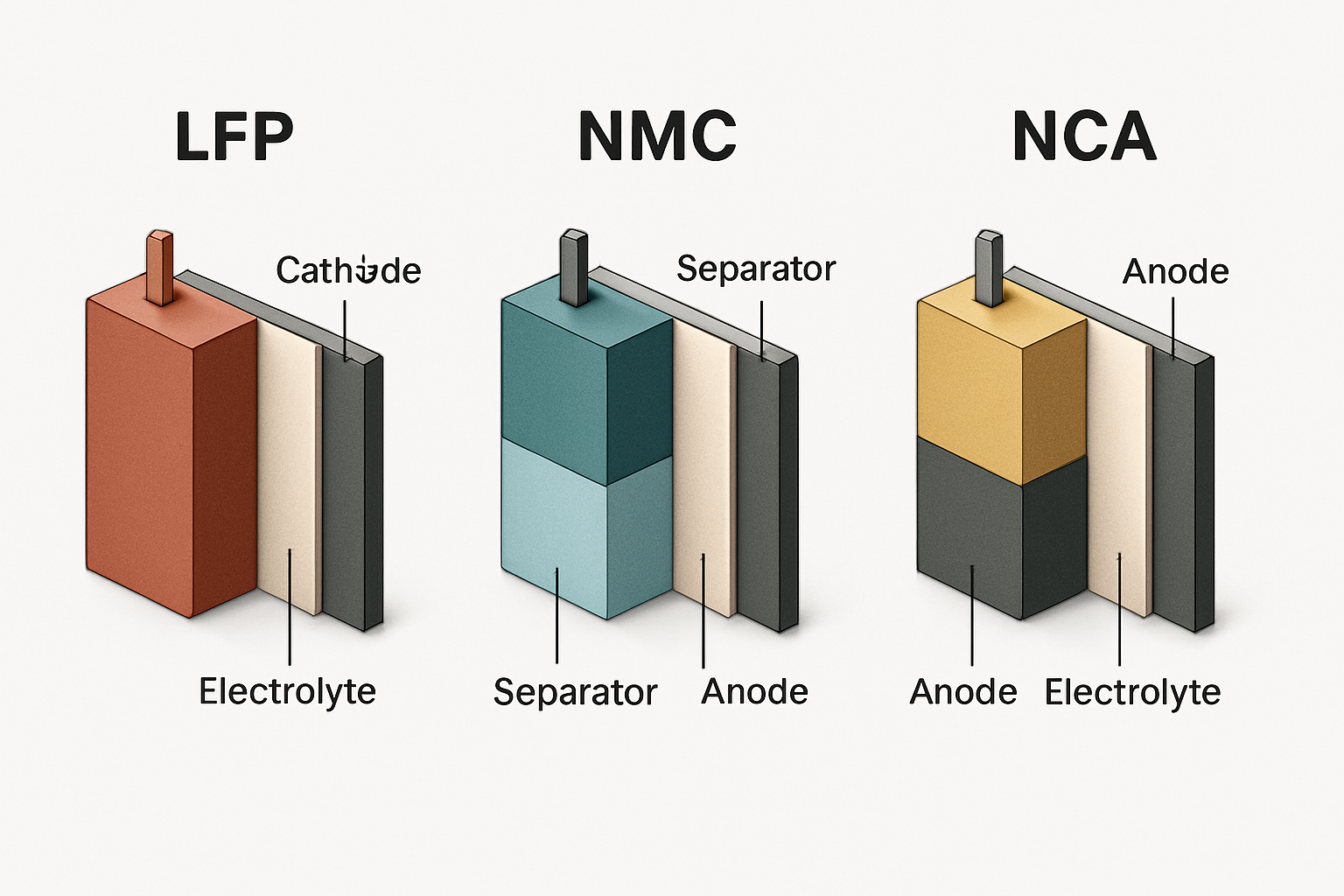When you decide to power your home with solar energy, choosing the right battery is as crucial as selecting your solar panels. The term 'lithium-ion' covers a family of battery types, each with unique characteristics. Understanding these differences is key to selecting a system that is safe, durable, and suited to your specific needs. This guide explains the most common lithium-ion battery chemistries available for home energy storage.
The Building Blocks of a Lithium-Ion Battery
Every lithium-ion battery operates on the same principle: moving lithium ions between a positive electrode (cathode) and a negative electrode (anode) through a liquid conductor (electrolyte). A separator keeps the cathode and anode from touching. While this structure is consistent, the materials used, especially for the cathode, define the battery’s performance.
Why Cathode Chemistry is a Deciding Factor
The cathode's composition directly influences a battery's energy density, power, safety, lifespan, and cost. The choice of materials like iron, cobalt, nickel, or manganese creates distinct chemistries with different strengths. As noted in a report by the International Energy Agency, the evolution of cathode chemistries can significantly alter the demand for various minerals. According to The Role of Critical Minerals in Clean Energy Transitions, this variety also presents challenges for recycling, as different chemistries require unique processes for disassembly and material recovery.
A Comparative Look at Common Lithium-Ion Chemistries
For home energy storage, three chemistries are particularly relevant: Lithium Iron Phosphate (LFP), Nickel Manganese Cobalt (NMC), and Nickel Cobalt Aluminum (NCA). Each offers a different balance of features.
Lithium Iron Phosphate (LFP or LiFePO4): The Safe and Stable Choice
LFP batteries are known for their exceptional safety and long lifespan. They use phosphate as the cathode material, which is more structurally stable than the metal oxides used in other chemistries. This stability makes them highly resistant to thermal runaway, a condition where a battery overheats uncontrollably. While their energy density is slightly lower than NMC or NCA, their durability and safety profile make them an excellent fit for stationary applications like a home energy storage system.
Nickel Manganese Cobalt (NMC): The Energy-Dense Powerhouse
NMC batteries blend nickel, manganese, and cobalt in the cathode. This combination delivers a high energy density, which is why NMC is a popular choice for electric vehicles (EVs), where space and weight are significant constraints. The trade-off is often a shorter cycle life and a lower thermal stability threshold compared to LFP. The reliance on cobalt, a rare and costly mineral, also affects its price and supply chain.
Nickel Cobalt Aluminum (NCA): A High-Performance Variant
NCA batteries are similar to NMC but use aluminum instead of manganese. This chemistry offers high energy and power density, but it can be less stable and requires more sophisticated safety monitoring from a Battery Management System (BMS). Its application is typically found in high-performance EVs rather than residential storage.
| Feature | Lithium Iron Phosphate (LFP) | Nickel Manganese Cobalt (NMC) | Nickel Cobalt Aluminum (NCA) |
|---|---|---|---|
| Primary Advantage | Safety & Lifespan | Energy Density | High Energy & Power |
| Cycle Life | Very High (3,000-6,000+ cycles) | High (1,000-2,000 cycles) | Moderate (500-1,000 cycles) |
| Safety (Thermal Stability) | Excellent | Good | Fair |
| Energy Density | Good | Excellent | Excellent |
| Cobalt Content | None | Yes | Yes |
| Common Application | Home Energy Storage, Buses | Electric Vehicles, Electronics | High-Performance EVs |
Key Performance Metrics Explained for Homeowners
Understanding a few technical terms will help you compare different battery options effectively.
Energy Density vs. Power Density
Energy density (measured in watt-hours per kilogram) tells you how much energy a battery can store for its weight. Power density (watts per kilogram) indicates how quickly it can release that energy. For a home system that discharges steadily over many hours, a long lifespan and safety are usually more important than having the absolute highest energy density.
Cycle Life and Depth of Discharge (DoD)
A cycle is one full charge and discharge. Cycle life is the number of cycles a battery can perform before its capacity degrades to a certain point (usually 80% of its original capacity). Depth of Discharge refers to the percentage of the battery's capacity that is used in each cycle. LFP batteries can typically be discharged more deeply without significant degradation, contributing to their longer overall lifespan. For a deeper analysis of how these factors affect battery health, the Ultimate Reference for Solar Storage Performance offers detailed insights into battery efficiency and degradation metrics.
Safety and Thermal Stability
This is arguably the most critical factor for a system installed in your home. Thermal stability refers to how well a battery resists overheating. LFP's chemical structure is inherently more stable, making it far less prone to thermal runaway compared to high-energy chemistries like NMC and NCA. This is a primary reason LFP is widely recommended for residential use.
Making the Right Choice for Your Home Energy System
Selecting the right battery chemistry involves aligning the technology's strengths with your priorities.
Prioritizing Safety and Longevity
For a home energy storage system, safety and a long service life are paramount. You want a reliable battery that will perform consistently for a decade or more. This is where LFP technology excels, providing peace of mind and a strong return on investment over time.
The Importance of a Quality Battery Management System (BMS)
Regardless of the chemistry, a sophisticated BMS is essential. The BMS acts as the battery's brain, monitoring its state of health, balancing the cells, and protecting it from overcharging, deep discharging, and temperature extremes. A quality BMS ensures both safety and longevity for your entire energy storage system.
A Look Ahead: The Future of Battery Chemistry
The battery industry is constantly innovating. Researchers are working on next-generation technologies like solid-state batteries, which promise even greater energy density and safety. A report from the IEA, The State of Energy Innovation, highlights developments such as a prototype solid-state EV battery cell reaching 500 Wh/kg, significantly higher than today's NMC chemistries. Innovations like potassium-ion batteries are also emerging, aiming to reduce reliance on lithium and other critical minerals. These future technologies may one day power our homes, but for now, LFP offers a proven, reliable, and safe solution.
Final Thoughts
Choosing a battery for your home is a significant decision. While different lithium-ion chemistries have their place, the unique demands of residential energy storage point toward a clear preference. For homeowners, a battery's ability to operate safely and reliably for thousands of cycles is more valuable than its ability to pack the maximum energy into the smallest space. By prioritizing safety, stability, and a long lifespan, you can build an energy storage system that provides lasting value and energy independence.
Disclaimer: This article is for informational purposes only and does not constitute financial or investment advice. Consult with a qualified professional before making any decisions about your energy system.
Frequently Asked Questions
What is the safest lithium-ion battery chemistry for a home?
Lithium Iron Phosphate (LFP or LiFePO4) is widely regarded as the safest chemistry for home energy storage. Its strong molecular bonds provide excellent thermal and chemical stability, making it highly resistant to overheating and thermal runaway, even if punctured or short-circuited.
How long do different lithium-ion batteries last?
A battery's lifespan is measured in cycles. LFP batteries typically offer a much longer cycle life, often between 3,000 and 6,000 full cycles, while retaining significant capacity. In contrast, NMC and NCA batteries, common in consumer electronics and EVs, usually provide 1,000 to 2,000 cycles under similar conditions.
Why are some lithium-ion batteries more expensive than others?
The cost is heavily influenced by the raw materials used in the cathode. Chemistries like NMC and NCA rely on cobalt and high-purity nickel, which are expensive and have volatile prices. LFP batteries do not contain cobalt, and iron and phosphate are abundant and more affordable, which often results in a lower upfront cost and more stable pricing.





Leave a comment
All comments are moderated before being published.
This site is protected by hCaptcha and the hCaptcha Privacy Policy and Terms of Service apply.